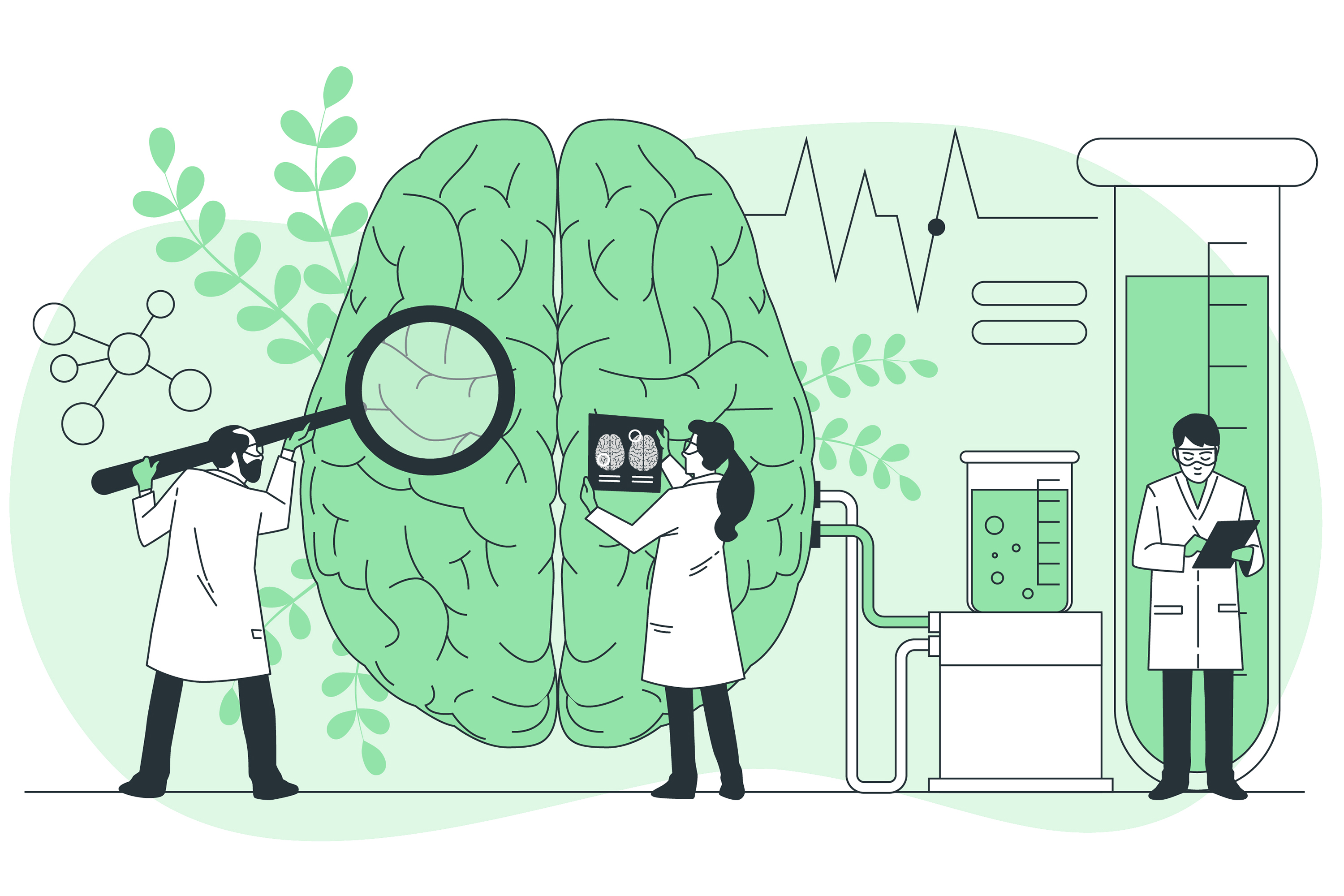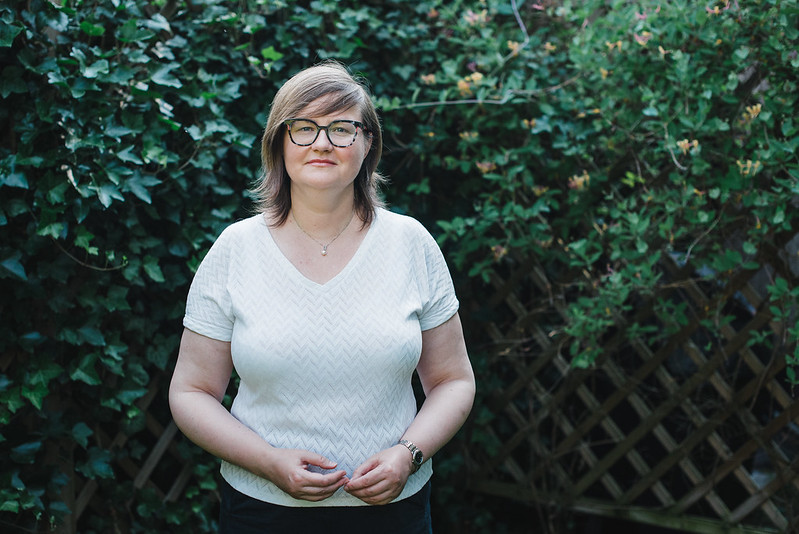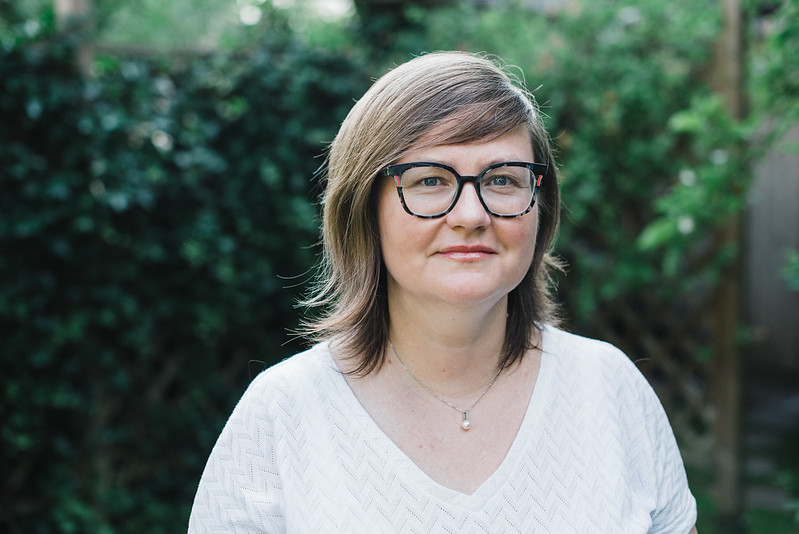Neurologist Assoc. Prof. Kristina Ryliškienė: Untreated Migraine Costs More

“One of the most popular migraine myths is that there is a magic pill that will cure everything. Another, debunked a few years ago by American scientists, is that migraine is a cover for avoiding work, social or family activities, and yet another suggests that migraines are very easy to treat. This is certainly not the case: migraine is a lifelong condition for sufferers. We do not have a cure, but we do have ways of managing it. When trying to manage a patient’s migraine and come up with a complex treatment regimen, you have to work hard,” suggested Assoc. Prof. Kristina Ryliškienė, lecturer at the Faculty of Medicine of Vilnius University and neurologist at Vilnius University Hospital Santaros Klinikos. She agreed to tell us about this poorly understood condition – often stigmatised by the public—its diagnosis and treatment.
People who suffer with migraines are given all sorts of advice. Drink more water, don’t get stressed, don’t smoke, and so on. Of course, this is not bad advice overall. And yet, what really is a migraine? Why is it not simply a headache?
Migraine may seem to be related to psychiatry (associated with stress or other emotional experiences), but the existence of modern treatment proves that it is a genuine chronic neurological disorder. However, to this day, the causes of migraine remain unknown. Migraines fall under the heading of primary headaches. This is because, the neurological examination of a migraine patient and all the imaging and laboratory tests performed in clinical practice, appear normal. The abnormalities caused by a migraine are much more subtle, and are located in the pain system, the so-called migraine neural pain network. The classic definition is that migraine is a headache characterised by attacks during which the pain is accompanied by certain physiological symptoms and given the generic name of migraine. These symptoms include sensitivity to sound and light, nausea or vomiting, and the need for rest, because any physical action, even a normal one, increases the pain.
Migraines can have symptoms not only during the pain, but also before it—this phase is called the prodrome. A migraine attack is followed by the postdrome phase, when the typical symptom—a headache—is absent, but a person still feels unwell. The untreated pain period usually lasts between 4 and 72 hours, and if we consider the entire pain attack from start to finish, i.e. including the prodrome and postdrome phases, then an episode of up to 5 days may occur. The additional symptoms of a typical migraine—visual, sensory and speech disturbances, with each usually lasting between 5 and 60 minutes—are referred to as aura. These may precede the headache, and occur less frequently during pain. A small number of patients may not have any headache at all after the onset of aura symptoms.
How does migraine affect the sufferer’s daily life and quality of life?
Migraine sufferers find it very difficult to take part in daily activities. A student might have to miss school. This can be a huge problem during the school-leaving exam—students and their relatives worry about how to avoid severe attacks during the exam, because the exams can determine the outcome of future plans. A student can miss lectures and tests, an employee can miss work, and in the family setting, it can be difficult for the migraine sufferer to do the household chores or look after their children. In other words, the patient’s education, studies, career and family life can be significantly affected. More broadly, migraine becomes a problem not only for an individual patient, but also for their family, close friends, co-workers, employers, and ultimately, a financial burden for the state if not treated properly. And so, everyone pays for migraine.

Let’s talk about migraine diagnosis: how is migraine different from, say, the tension or cluster headache?
Migraine disorders are primary headaches, their cause is unknown, and they are usually genetically pre-determined. No structural abnormalities are detected in head imaging tests, and the diagnosis is based on the patient’s account. Primary headaches are episodic headaches and they differ from each other mainly in terms of the severity and duration of the attacks, the accompanying symptoms and the effect of physical activity on the severity of the headache. The primary headache group is subdivided into 4 subgroups. The first subgroup includes different types of migraine (with aura, without aura, vestibular, menstrual, etc.). The Latin name for migraine was hemicrania, translated from the Greek as “half head”, and one of the canonical symptoms is pain on one side of the head. The other main symptom is a throbbing headache. However, a study of patient complaints conducted over 20 years ago, showed that these generally accepted symptoms – one-sidedness and throbbing – are actually the least specific. The more specific symptoms of migraine today are considered to be sensitivity to sound and light, nausea or vomiting, and the inability of the patient to perform any physical activity during the pain.
The second subgroup is tension headaches, which can be episodic and chronic. Tension headaches do not include the classic migraine symptoms. Based on the accompanying symptoms, tension headaches are only “slight” in nature. Sufferers will experience a headache or tension in the head, the pain is usually bilateral, mild to moderate, there is never any nausea (even a slight nausea indicates a migraine), and if there is a sensitivity to sound, then there will be no sensitivity to light, and vice-versa (only one of these will be present). Often the patient has both types of pain – a migraine and tension headache – and in clinical practice it is not uncommon for a mild tension headache to develop into an episode of migraine. As a result, it is sometimes argued in the scientific literature that a tension headache is simply a mild migraine.
The third subgroup of headaches is trigeminal autonomic cephalalgias. These are characterised by a clear localisation of pain in the eye orbit and surrounding tissues like the forehead, temple, or maxilla. During an attack, on the side that is painful, the sufferer also experiences nasal congestion or dripping, redness, and tearing of the eye. In the case of a severe attack, there may even be a slight drooping of the upper eyelid and a narrowing of the pupils. It is worth noting, that the patient usually experiences this pain on the same side throughout their life. These are called autonomic symptoms. The most common example of the group is the cluster headache: in this case, attacks of unbearable severity can last from 15 minutes to 3 hours and can recur several times a day during disease flair-up. Pain is accompanied by autonomic symptoms, and the patient is restless. A patient may have several primary headache disorders, for example, both migraine and cluster headaches.
The fourth subgroup of primary headaches includes other rare primary headaches, whose names will usually refer to the factor provoking the pain, e.g. headaches caused by cold, hypnic headaches (pain appears during sleep, formerly known as the “alarm clock” headache), headaches related to sexual activity, physical activity, coughing, pressure in the head or face and so on. Other names will refer to the nature of the pain or other characteristics, e.g. a stabbing headache (formerly known as the “ice pick”), or a nummular (coin-sized) headache.
When diagnosing a patient with migraine based on diagnostic criteria, it is important to assess the frequency of migraine by counting the number of days of any type of headache and noting any migraine-specific pain. Several decades ago, a diagnostic category of chronic migraine was introduced by professional consensus, to define the “severe” pain. This migraine occurs for 15 or more days per month, can be any type of headache (tension, migraine, etc.), occurring over at least 3 consecutive months, but with at least 8 of the total number of days presenting as a migraine headache.
Is migraine a hereditary disease? What provokes a migraine?
Yes, there is a genetic predisposition to migraine. If a patient has migraine without aura, twice as many blood relatives will have migraine without aura as compared to that of the general population. If the patient has migraine with aura, four times as many blood relatives will have migraine with aura as compared to that of the general population. It is certainly the case that the patient does not usually specify the number of affected persons in the family. However, it should be taken into consideration that not everyone is willing to open up about their health problems, and if they were affected just at a young age, it may no longer be relevant to talk about it. The question as to what triggers a migraine is a very common one. It is important to know that the frequency of migraine attacks is specific to each patient. There are patients who have a very high number of attacks from a young age, but the vast majority of patients typically have 1-2 migraine attacks per month. We always check the initial frequency, as it is a good indicator for the correct treatment required to reduce the attacks. It is well known that migraine exacerbations can be caused by certain medical conditions, the most important of which are high blood pressure, sleep disorders of any origin and being overweight. For women of childbearing age, the typical trigger is menstruation and the related hormonal changes, and this is why women suffer from migraine three times more often than men. Migraines can also be triggered by external circumstances: anxiety-related situations at home and at work, meteorological conditions and a variety of other factors.

In the media one can find lots of information that migraines strongly depend on certain food intake. Can you tell us more about this?
Certain food groups, e.g. sweet, salty, etc., are often identified as triggers for migraines. However, such food cravings can occur during the prodrome phase, when the headache is not yet present but the brain’s pain system is already activated, so it is not entirely correct to consider them as triggers. Alcohol can provoke an attack (patients will usually have already noticed that certain types of alcohol cause problems), but it should be borne in mind that alcohol alone is usually a weak trigger, it is just a part of the whole “bouquet” of triggers. For example, alcohol is consumed during the holidays, and perhaps it is accompanied by some unusual food, or the patient is tired on that day or goes to bed late. The headache classification also distinguishes between headaches caused by certain chemicals present in food, but these headaches are not called migraines. For example, glutamate is an additive used in Chinese cuisine: if it gives you a headache after eating, the pain is treated as a headache simply caused by glutamate.
Unfortunately, there is no universal diet that works for all migraine sufferers. The diet should be healthy – regular, with a minimum of fast-acting carbohydrates, adequate fluid intake, and a low intake of dietary caffeine. Intermittent fasting is not recommended—headaches may get significantly worse. If you still want to follow a diet, you can try the easiest one—gluten-free. A dietician can help you with a specific diet that suits your needs, not so much for headaches but for other conditions (e.g., gastrointestinal, allergies, or skin conditions).
Let’s talk about medications used for treating migraine: what types of treatments are available, what are the most common medications?
Medication can be divided into two main groups: those to relieve symptoms of attacks and those to reduce the frequency of attacks. Both must be combined for complete treatment. The general statistic, is that around 40% of patients use combination therapy to treat their condition, which means that there is no one-size-fits-all pill that will put an end to migraines quickly.
Specific and non-specific treatment is used to control the symptoms of the attacks. Non-specific treatment includes various non-steroidal painkillers and anti-inflammatory drugs. The most commonly used drug worldwide is ibuprofen. Specific treatment includes classes of drugs developed to treat specific varieties of migraine. Triptans have been globally available for three decades, and in Lithuania we have 6 out of the 7 triptans, so the choice is very broad. These work by blocking neurogenic inflammation. A typical example from the triptan class is sumatriptan. However, the strength, speed and duration of action of triptans may not be sufficient, and unwanted side effects are not uncommon. Two new classes of specific medication are currently pending (US approval in 2019–2020): dithanes and gepants. The first gepant in Lithuania, rimegepant, is due to reach patients this autumn. Gepants act on a substance called CGRP (Calcitonin Gene-Related Peptide), a neuropeptide identified decades ago in the trigemin-vascular system and responsible for all pain. The use of gepants during a migraine attack would inhibit CGRP and terminate the attack. It is difficult to predict whether this will be a breakthrough in the treatment of migraine attacks, as European doctors have not yet experienced the results of prescribing it. According to US clinicians, gepants have similar efficacy to triptans. Gepants are expected to be a new option for patients who are less tolerant to triptans or who cannot be prescribed them due to specific counterindications.
Treatments to reduce the number of migraine attacks can be either non-medicinal or medicinal (the latter is also divided into non-specific and specific). The English acronym SEEDS (sleep, exercise, eating, diary, and stress), brings together the essential non-medicinal treatment, indicating that sleep, regular physical activity (especially emotionally satisfying), regular diet, maintaining a headache diary, and non-medicinal stress management are necessary for every patient. A healthy lifestyle does the main job and can be reinforced with 2 main supplements—magnesium citrate and coenzyme Q10. Unfortunately, in almost 40% of patients, these measures are not sufficient and supplementary treatment is required.
Other non-medicinal treatment includes portable electric current or magnetic wave generating devices. The Food and Drug Administration has approved 5 such devices for headaches, and we have 2 of them in Lithuania, but this treatment is not reimbursed by the State Health Insurance Fund. Depending on the technique, the trigeminal, occipital, and vagus nerves can be stimulated manually (called remote neurostimulation), and the occipital region can be stimulated with magnetic waves. All of these devices can also be used during the attack, but their main function is to reduce the frequency of attacks. The patient must use them regularly, for example once or several times a day.
However, stronger migraine-reducing drugs may be required when dealing with severe cases. Non-specific treatment has been used for several decades and includes 3 main groups of drugs: antidepressants, antiepileptics and blood pressure reducing drugs. As of 2019, the medication available to reduce the frequency of migraines has undergone a breakthrough. There are now two drugs developed specifically for migraine that block CGRP or its receptors: monoclonal antibodies (biological therapy) and the aforementioned gepants. There are currently 4 monoclonal antibodies available globally (3 of which are administered subcutaneously on a monthly basis, and 1 intravenously). In Lithuania, we have 2 types available on the market that are administered subcutaneously, with excellent evidence of effectiveness and usually well tolerated. Administered by an injection once a month, they are very convenient to use.

I’ve heard about the treatment of migraines using onabotulinum toxin injections – tell us more about it. Is this treatment as effective as biological therapy?
The treatment of migraines using onabotulinum toxin injections is not reimbursed by the State Health Insurance Fund in Lithuania and it is therefore used much less frequently than is necessary, relative to the severity of the migraines. It is a non-specific treatment: the drug is injected close to the nerve endings, where onabotulinum blocks the release of various neurotransmitters that are also relevant to migraine pain. At least 2 cycles of injections administered every 12 weeks are required to assess the results of this treatment, and recommendations regarding the continuation of treatment can only be made after the second injection, i.e. 6 months after the start of treatment. A total of 31 injections are administered per cycle to fixed sites and 8 additional sites. Thus, a total of 39 injections per cycle, totalling almost 200 U of onabotulinum. In Lithuania, this is used for the treatment of severe migraine as an adjunct to CGRP-blocking monoclonal antibody therapy.
We hope this article has gone some way to explain the complexities of treating migraines. There is a very broad palette of migraine treatments, and these are continually evolving and developing. The key, as always, is to find the most suitable treatment for each individual patient.